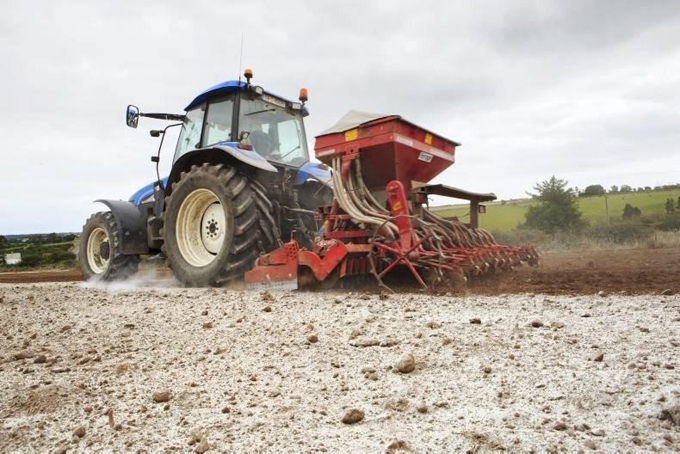Dairylink: Turning over a New Sod in Co Cavan
6th May 2015

Dairylink farmer Philip Donohoe based in Kilnaleck Co Cavan is implementing a reseeding policy on his farm in an attempt to reduce the costs of production with increasing grass quality and quantity.
Philip Donohoe has targeted 25 acres of land on his farm for reseeding this month, all of which is on the grazing platform and which has been underperforming over the past few years in terms of growth and the level of weeds within the grass.
Last year, Philip attempted to solve the lack of growth in these paddocks with targeted nutrients and by ensuring soil pH was correct. However, continued underperformance of the grass throughout the 2014 growing season convinced him that a total reseeding of the area is required.
When to reseed
Philip sprayed the fields with glyphosphate two weeks ago and plans to get the cultivation, including sub-soiling and ploughing, completed this month, and the seed sown in early May.
There is no requirement to spread lime on the land that needs reseeding. He is completing the work now as past experience on the farm has highlighted that spring reseeds tend to have the most chance of success.
With all grass on the farm at maximum growth at this time, Philip will be able to manage the herd without the 25 acres he has targeted for reseeding. He is confident that with a good establishment, the reseeded land will be available for grazing again 60 to 70 days from when the area was first sprayed. This should see animals on the land again around the first week of June.
Philip prefers the spring reseed as it provides the opportunity to control weeds through spraying before they get established. Furthermore, as grass is growing at its maximum rate in the spring, it can outperform the growth of any weed species during its establishment.
Costs of reseeding
Table 1 highlights the potential cost of the reseed to the Donohoe farm in relation to each aspect of the operation, based on typical 2015 NI contract and seed costs. It highlights the investment that will likely be required based on a total reseed, including subsoiling and ploughing to establish the new sward, with the exception of lime, which was not required. Some operations may not be necessary on all farms.
Much of the additional yield and quality from a reseed is driven by an improved response to applied nutrients.
In Philipís case, the 25 acres earmarked for reseeding were notably slow responding to fertilizer last year, and with the area in a grazing rotation, he also noticed that this particular area required an additional 10 days to recover when compared to the other grazing paddocks on the farm.
In terms of cash investment, Table 1 highlights a significant cost to establishing a new grass sward, but it is important to remember that this cost will be offset with a much-improved response to nitrogen from the newly established grass.
Typically for every kilogramme of nitrogen applied (from bag/slurry) you could see a 25kg DM response from a young vigorous sward at peak growing time.
With this level of response, grass is cheap forage, especially when establishment costs are only likely to be incurred in one of the potential 10 years that the grass is in your paddock.
In relation to grass seed variety choice, Philip has opted for a two diploid variety mixture consisting of Glenveagh and Glenroyal, which will be sown at 15kg/acre. He selected these varieties as a result of their ability to tiller and provide good cover for the relatively heavy land type he is reseeding.
Take-home message
Quality grass, be it in the form of grazing or silage, drives profit. To maximise this, we need productive grass and an ideal soil nutrient status. With the national average of only 2% of land reseeded each year, now is a good time to assess which swards are performing and which are not and make a plan. It is reasonable to expect to have to reseed 10%-20% of the farm per year to achieve the farmís full grass growth potential.
This article has been reproduced with the kind permission of the Irish Farmers Journal. Please click on the below Irish Farmers Journal logo to be brought to additional dairy articles
